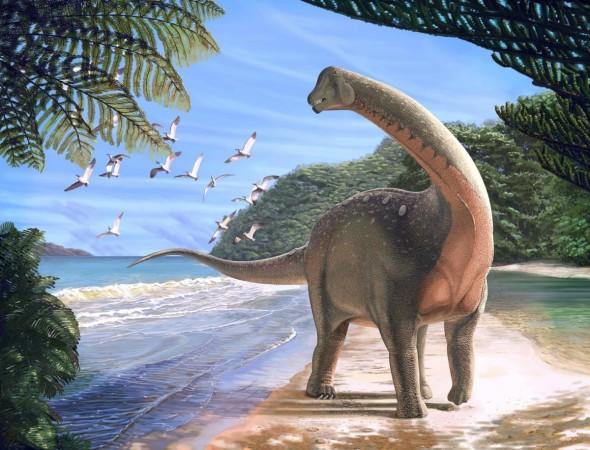
Finding dinosaur bones in Europe, North America and Asia is nothing new, but the latest discovery of new species of dinosaur is just incredible. In a rare case, researchers have discovered a new species of dinosaur in Egypt and they believe it could shed light on an ancient mystery.
Also Read: Dinosaur egg discovered in Gujarat's Balasinor
The dinosaur named Mansourasaurus shahinae, which lived during the Cretaceous period, stretched the length of a school bus and was as heavy as an elephant. The dino had a long neck and bony plates in its skin, researchers said in the study published in the journal Nature Ecology and Evolution.
Palaeontologists from Mansoura University in Egypt discovered the 80-million-year-old dinosaur fossilised remains in 2013 and analysed it and thus it was named Mansourasaurus.
But why the finding is remarkable? Researchers said that the evolution of dinosaur in Africa has remained a mystery for the last 30 million years and this latest discovery could help understand the end of the Cretaceous dinosaur (100 million to 66 million years ago) in Africa.
"This was the Holy Grail. A well-preserved dinosaur from the end of the Age of Dinosaurs in Africa that we palaeontologists had been searching for for a long, long time," Study co-researcher Dr Matt Lamanna of Carnegie Museum of Natural History, adding that his jaw "hit the floor" after seeing the photos of the fossils.
"Africa remains a giant question mark in terms of land-dwelling animals at the end of the Age of Dinosaurs," Dr Eric Gorscak of The Field Museum, who worked on the research, said in the published journal.
"Mansourasaurus helps us address longstanding questions about Africa's fossil record and palaeobiology - what animals were living there, and to what other species were these animals most closely related?"
What do researchers want to find out?
Before the Cretaceous Period, the continents were all connected and the one supercontinent was called Pangaea. During this period, the continent had split apart into a different land mass which resembles the configuration we see today.
What researchers want to know how well Africa was connected to Southern Hemisphere and Europe and how cut off were the animals in Africa.
After analysing the features of its bones, researchers believe that Mansourasaurus could shed some light.
"Africa's last dinosaurs weren't completely isolated, contrary to what some have proposed in the past," Gorscak said. "There were still connections to Europe."
"The discovery of rare fossils like this dinosaur helps us understand how creatures moved across continents and give us a greater understanding of the evolutionary history of organisms in this region," Dena Smith of the National Science Foundation, which partially funded some of the research in the study, said.








